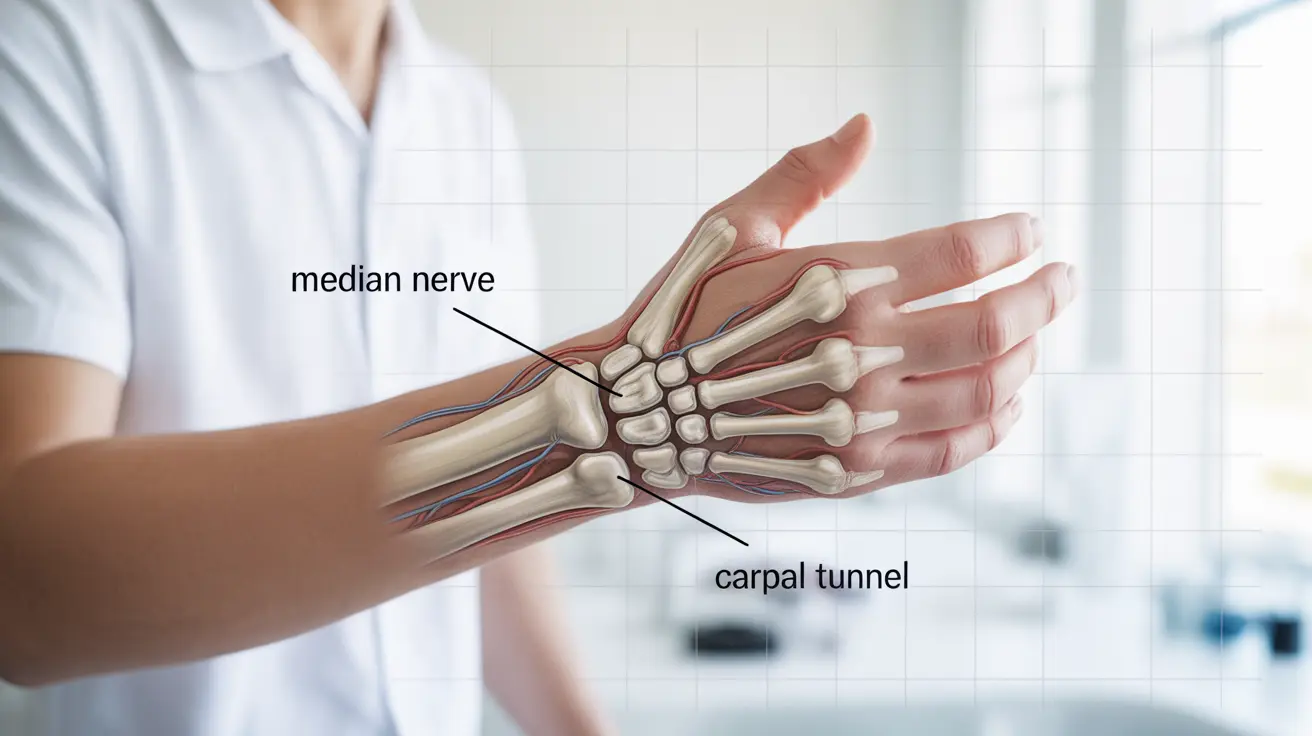Carpal tunnel syndrome can be a confusing and uncomfortable condition that affects millions of people worldwide. The sensations and symptoms can vary significantly from person to person, making it crucial to understand how carpal tunnel actually feels and what signs to watch for. This comprehensive guide will help you identify and understand the distinct sensations associated with carpal tunnel syndrome.
The Characteristic Sensations of Carpal Tunnel Syndrome
The hallmark feelings of carpal tunnel syndrome typically begin gradually and can affect different parts of the hand and wrist. Most people experience a combination of several distinct sensations:
Tingling and Pins-and-Needles
The most common sensation is a tingling or pins-and-needles feeling, similar to when your hand "falls asleep." This typically affects the thumb, index, middle, and half of the ring finger, while the pinky finger usually remains unaffected.
Numbness and Loss of Sensation
As the condition progresses, you might experience numbness in the affected fingers. This can make it difficult to perform fine motor tasks or distinguish temperature differences with your fingertips.
Pain and Discomfort
Many people experience aching or sharp pain that can extend from the wrist up the forearm. The pain may be accompanied by a feeling of weakness, particularly in the thumb's gripping muscles.
Early Warning Signs and Progressive Symptoms
Recognizing early signs of carpal tunnel syndrome is crucial for proper management and treatment. Initial symptoms often include:
- Occasional numbness or tingling in the fingers
- Mild discomfort in the wrist
- Difficulty with fine motor tasks
- Dropping objects more frequently
- Morning stiffness in the hands
These symptoms typically start intermittently but may become more constant and severe over time if left untreated.
Nighttime and Activity-Related Symptoms
Many people notice their carpal tunnel symptoms intensify during certain situations:
During Sleep
Symptoms often worsen at night because people tend to sleep with their wrists bent, which increases pressure on the median nerve. This can lead to sleep disruption and the need to "shake out" the hand for relief.
During Activities
Certain activities can trigger or worsen symptoms, including:
- Typing or using a computer mouse
- Gripping objects firmly
- Repetitive hand movements
- Holding vibrating tools
- Driving for extended periods
Managing Carpal Tunnel Discomfort
Several strategies can help alleviate the uncomfortable sensations of carpal tunnel syndrome:
- Wearing a wrist splint, especially at night
- Taking regular breaks during repetitive activities
- Performing gentle wrist stretches
- Applying ice to reduce inflammation
- Making ergonomic adjustments to workspaces
Frequently Asked Questions
How does carpal tunnel syndrome feel in the hand and fingers?
Carpal tunnel syndrome typically feels like tingling, numbness, or pins-and-needles sensations in the thumb, index, middle, and half of the ring finger. Some people also experience aching pain that can extend up the forearm.
What are the early signs and symptoms of carpal tunnel syndrome?
Early signs include intermittent tingling or numbness in the fingers, mild wrist discomfort, difficulty with fine motor tasks, and occasional weakness when gripping objects. These symptoms often start gradually and may come and go initially.
Why do carpal tunnel symptoms often worsen at night or with wrist activity?
Symptoms typically worsen at night because people tend to sleep with bent wrists, increasing pressure on the median nerve. Activities involving repetitive wrist movements or prolonged wrist flexion can also aggravate symptoms by compressing the nerve.
How can I relieve the numbness, tingling, and pain caused by carpal tunnel syndrome?
Relief can often be found through wearing a wrist splint, taking regular breaks from repetitive activities, performing gentle stretches, applying ice, and making ergonomic adjustments to your workspace. Over-the-counter pain relievers may also help.
When should I see a doctor for carpal tunnel syndrome symptoms?
You should consult a doctor if symptoms persist for more than a few weeks, interfere with sleep or daily activities, cause weakness in your hand, or if you experience constant numbness or loss of coordination in your fingers.




